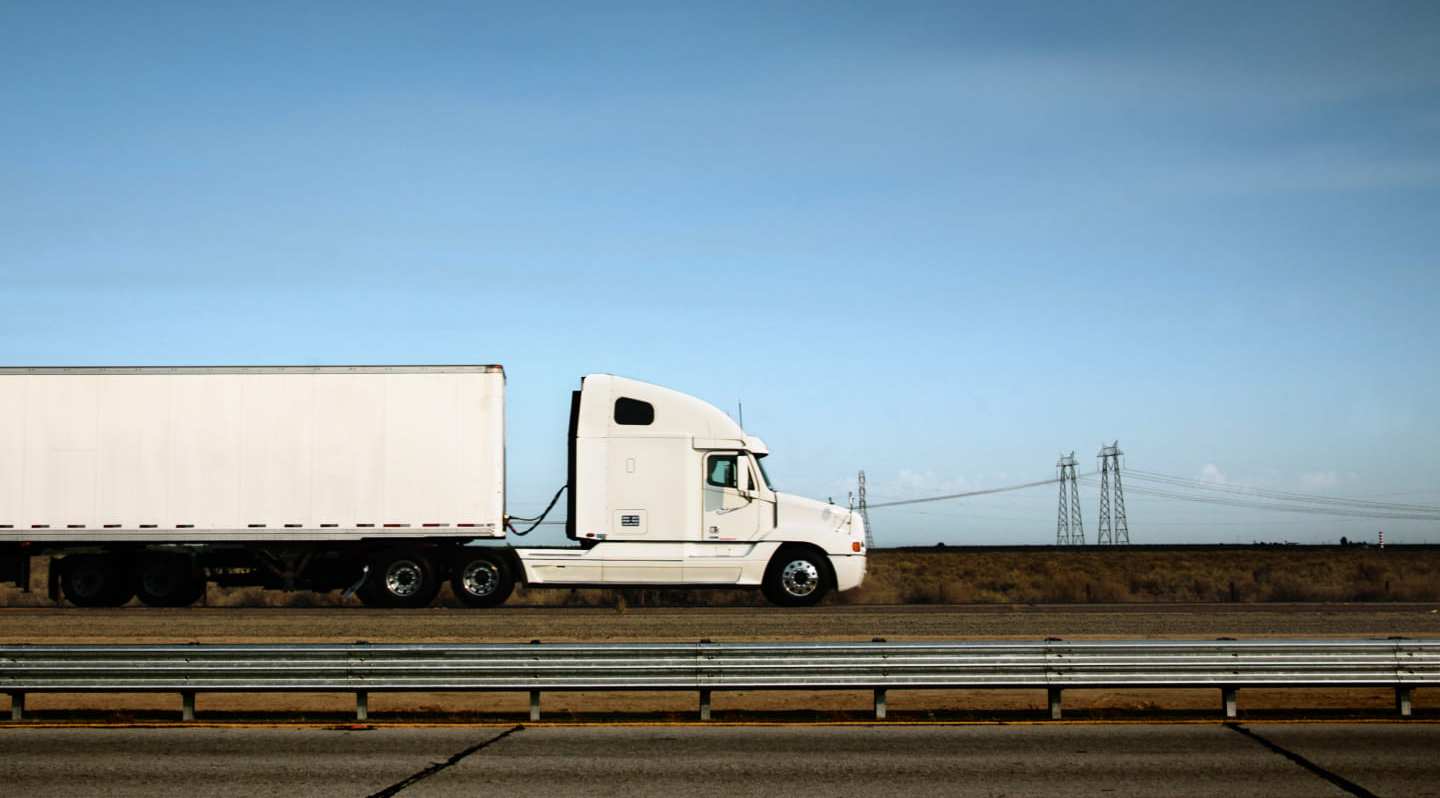If it’s your business to transfer freight, understanding the nuances between the different types of trailers available to move goods is essential. No trailer is a one-size-fits-all solution, so when choosing the right trailer for your freight, you need to consider things like how heavy your goods are, what temperatures they need to be stored in, and the most cost-effective solution for your business.
When considering the pros and cons of going with a reefer trailer or a dry van, it’s less of a consideration of which trailer is better than the other, but which is best suited for the type of cargo you’ll be transporting.
Already have the right trailers for your needs? Contact Motive Sales to discuss fleet management tools.
The difference between dry van and reefer trucks/trailers
The difference between reefer and dry van trailers is in the type of cargo they are each built to carry. Dry van trailers are the most common type of trailers operating in America. Dry vans typically ship every-day-use items. Dry vans are typically used for items on pallets, in boxes, or that can be carried loose in a box enclosure.
The biggest difference between dry van and reefer trailers is that reefer trailers are refrigerated trailers with temperature-controlled units built into them. Reefer trailers are used for items that require a temperature-controlled environment and risk spoiling or becoming ruined if not kept at a specific temperature. Items like produce, pharmaceuticals, and candles are transported using reefer trailers.
Reefer vs dry van weight
When comparing a dry van vs reefer trailer, the weight capacity of each should be taken into consideration to ensure it suits the freight you’ll be carrying. Dry vans can carry up to 45,000 pounds in cargo.
Reefer trailers are designed to be as strong and light as possible so you can haul maximum cold chain product without exceeding the federal GVWR (80,000 pounds for dual axles or 90,000 pounds if you have a third axle).
The GVWR counts more than just the weight in the trailer. This combined weight includes:
- The truck
- The driver
- Personal property
- Truck fuel
- Reefer fuel
- The trailer
- Product in the trailer
To illustrate, check out this short use case. You’re driving a truck that weighs 14,000 pounds (including yourself, your personal property, and fuel), and your trailer weighs 13,000 pounds. You have a standard two-axle trailer, which means you can legally weigh 80,000 pounds. The difference between the GVWR and your current weight is 53,000 pounds, so that’s how much cold chain freight you can carry.
Reefer vs dry van dimensions
The dimensions of reefer vs dry van trailers are another consideration when deciding which to choose to haul your freight. The most typical dry van dimensions are:
- 53’ Trailers are 53’ x 8’6” x 8’6” and can carry as many as 26 pallets.
- 48’ Trailers are 48’ x 8’5” x 13’6” and can carry up to 24 pallets.
- 28’ Trailers are 28’ x 8’ x 9’ and can carry 22,500 pounds and 14 pallets.
- Box Trucks are 24’ x 8’ x 6’ and can carry freight weighing up to 10,000 pounds.
Standard reefer trailer dimensions:
- The length of reefer trailers ranges from 48 to 53 feet.
- The external width of a reefer is 8 feet and 6 inches.
- The internal width of a reefer is 8 feet and 1.5 inches.
- The external height is 13 feet and 6 inches high on a 46.5-inch fifth wheel.
- The internal height is about 8 feet and 7 inches with a door height of 9 feet and 2 inches.
Reefer vs dry van rates
Load rates always vary depending on market conditions, so it’s important to stay informed on reefer vs dry van rates so you know how prices will affect your bottom line. As of October 2022, DAT Freight & Analytics reports dry van linehaul rates as being between $1.75 and $2.00/mile. To elaborate on market conditions, DAT explains, “Even though dry van spot rates are $0.62/mile lower than the last year, they are still $0.22/mile higher than the average of the prior four pre-pandemic years for the beginning of October.”
As for reefer van rates in October 2022, DAT reports them being between $2.00 and $2.25/mile, and have been mostly flat, “remaining at a national average of just under $2.19/mile, $0.71/mile lower than the previous year. Reefer spot rates have decreased by 31% since the start of the year and at the start of October, are just $0.07 higher than this time in 2018.”
Can you use a reefer as a dry van?
One of the bigger advantages of reefer trailers is their versatility, since you can use them to carry both refrigerated and non-refrigerated loads.
While it’s true that operating reefer trailers can be more expensive than dry vans, having one trailer that can haul both dry and refrigerated goods could end up being a more economical solution than purchasing more than one trailer to move different types of goods.
Dry van or reefer? Which should you choose?
There’s no single answer to the question regarding dry van vs reefer. Consider the advantages and disadvantages of each when choosing which type of trailer is best for you.
Reefer trailer advantages:
- Perishable goods like food and medicine are always in demand.
- You can use reefers to haul dry and refrigerated items.
- Reefer trailers are temperature-controlled and hazmat compatible.
Reefer trailer disadvantages:
- Reefers can be more expensive to operate and maintain than dry vans.
- Potential malfunctions to refrigeration units could make the risk of damaged loads greater.
- Loading and unloading at docks can take longer.
Dry van advantages:
- Dry vans come in many different sizes to suit various types of shipping needs.
- They’re easier to load and unload, with less equipment to manage.
- They’re typically cheaper to operate than reefer trailers.
Dry van disadvantages:
- Dry vans usually have wooden floors that can be more susceptible to damage.
- They cannot carry temperature-sensitive materials.
- They’re not protected from weather conditions like extreme heat or freezing temperatures.
Reefer vs dry van for owner operators
When owner operators are considering the question of reefer vs dry van, they should consider the same advantages and disadvantages above. Ask yourself questions like:
- Will I be carrying cargo that needs to be temperature controlled?
- What’s my budget for carrying cargo?
- Will I be driving in extremely hot or extremely cold weather?
- What are the regulations when it comes to the conditions in which my cargo needs to be transported?
Powerful technology for all fleet operators
Whether you are an owner operator or run a fleet of dry vans or reefer trailers, Motive can help you thrive. With a suite of AI-powered applications, Motive helps you automate tracking and telematics, driver safety, compliance, maintenance, spend management, reefer monitoring, cold chain management, and much more.
Contact Motive Sales to discuss the right fleet management tools for your needs.










